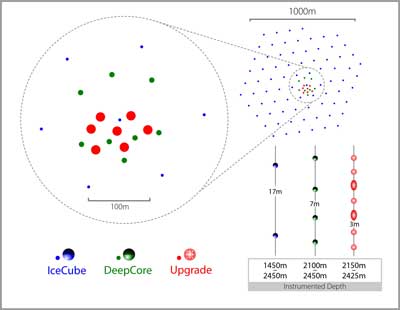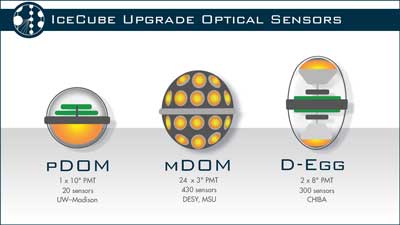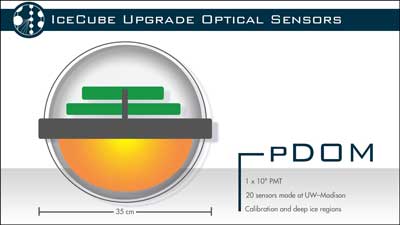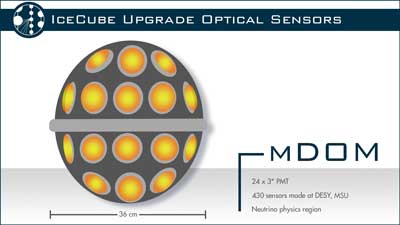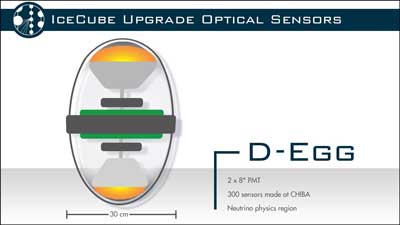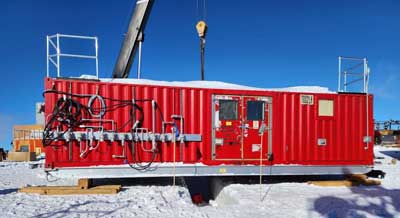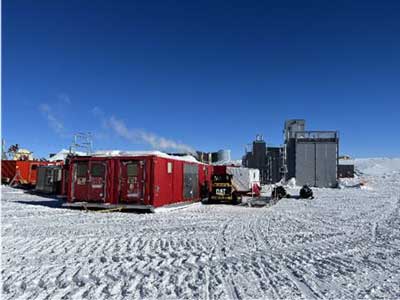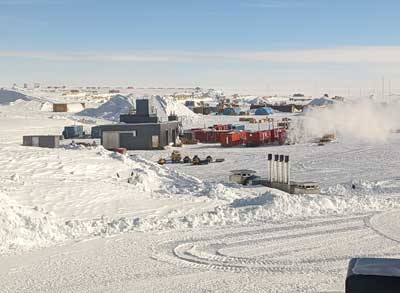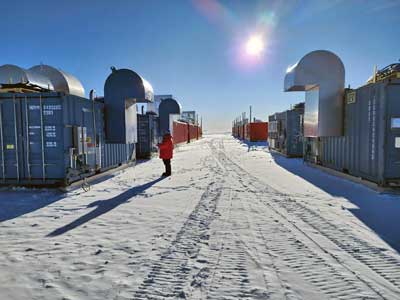IceCube Upgrade!
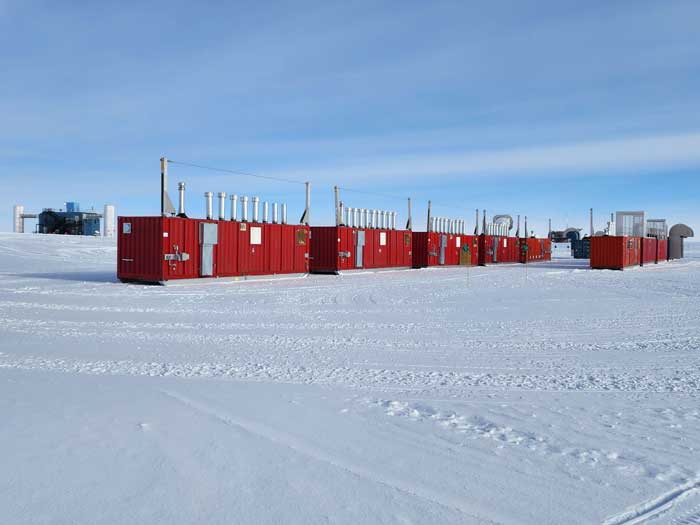 The seasonal equipment site (SES) (AKA "drill camp") staged at the future drilling site at the end of the 2023-24 season. In the foreground are the main heating plants...other stuff here are three generators, tanks, pump, and fuel equipment. The IceCube Laboratory (ICL) is in the background. All photos are by Kurt Studt unless indicated otherwise.
| |
|
The above 5 images are from this press release image page which includes additional images and video (from this July 2019 press release). More clarifications...a PMT is a photomultiplier tube...these were components of the original DOMs. As for other listed developers/producers of the modules, DESY is the Deutsches Elektronen-Synchrotron in Germany, MSU is Michigan State University, and CHIBA is Chiba University in Japan (mentioned on this page). Other than some preliminary inspections in 2022-23, 2023-24 saw the first significant field work in preparation for installing the new strings. Perhaps 20+ folks including winterovers and ASC personnel were involved...many people were from Wisconsin's Physical Science Laboratory (PSL). The group included team members from Sweden, New Zealand, and Thailand. All of their required cargo, including one of the generator modules, arrived on the first South Pole Traverse on 13 December. The first task was to move many of the modules and other equipment to a test site adjacent to the Cryo building. | |
|
Two drills are used to create the Rodriguez well (what is a Rodriguez well?) that will provide water for the hot water drills that are used to create the holes for the sensor strings...a firn drill ("carrot") used to drill through the surface snow layer...about 40m, and the ARA Drill (Antarctic Rodwell Assembly aka Askaryan Radio Array drill) used for the remaining depth: 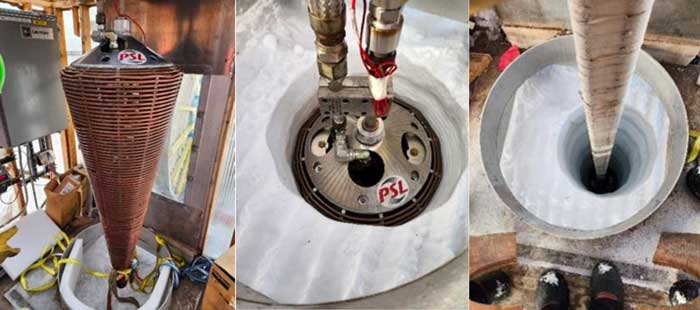 Above, a composite of the firn drill during its initial operation at the Cryo test site. It is . I remember it hanging around in the Rodwell buildings. Both of the drills are needed to create a Rodriguez well to provide water for the hot water IceCube drills ...and both drills were used this season to create an "Intermediate Sewer" for the station...to be used if the current sewer (formerly Rodwell 2) fills up. | |
 A composite of the ARA drill assembly and insulated "hotbox" (plumbing manifold) being assembled for testing at the test site. This drill is used to complete the Rodwell...putting together and checking out the large hot water drill assemblies used for the actual IceCube string drilling and installation will be a project for 2024-25. 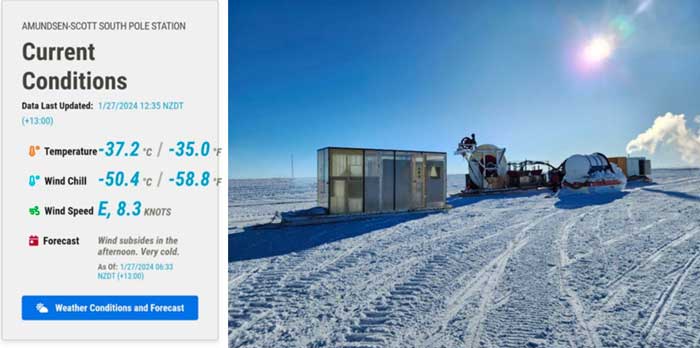 The ARA drill in position at the temporary "Intermediate Sewer" site at the station. The first 120 feet was drilled in December with the firn drill...the ARA drill completed the hole to about 250 feet, in late January in the weather conditions shown. As things kept icing up, a temporary warming tent had to be fashioned around the drill.
All of the remaining personnel left Pole on 9 February and continued north from McMurdo a week later. Some of the above information and additional details can be found in this public IceCube report which was posted on 1 February 2024. Also, some of the original design details for the IceCube Upgrade and the rest of the forthcoming IceCube Gen2 can be found in this 2019 paper "Neutrino astronomy with the next generation IceCube Neutrino Observatory". | |
